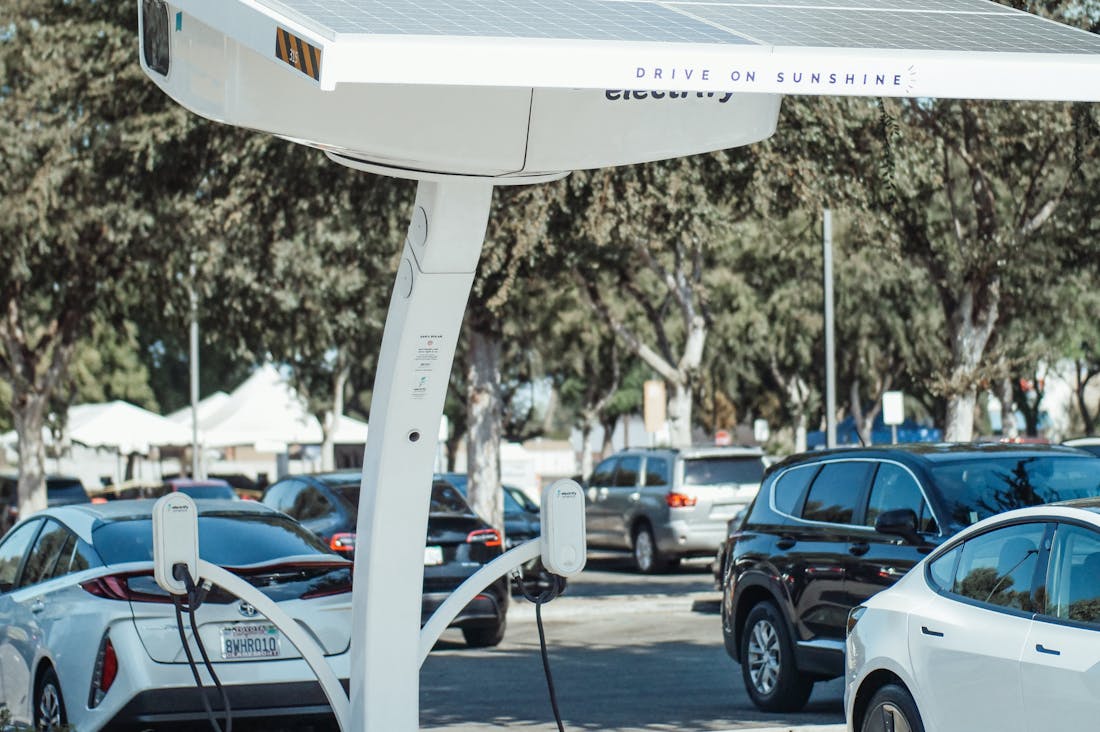"Revving Up: The Intersection of Automobiles and Sustainable Practices" takes you on an enlightening journey through the evolution of the automotive industry as it strives for sustainability. Highlighting innovative technologies, eco-friendly materials, and emerging trends, this exploration sheds light on how manufacturers and consumers can harmonize their passion for cars with environmental stewardship, paving the way for a greener future. By examining the challenges and breakthroughs in the realm of sustainable transportation, this narrative unveils the transformative potential of the automobile industry in combating climate change while still delivering the thrill and utility that drivers crave. Join us as we navigate this crucial crossroads, where horsepower meets responsibility.

Trends in Sustainable Automotive Technology
The automotive industry is undergoing a transformative shift towards sustainability, driven by a combination of environmental concerns, regulatory pressures, and consumer demand for greener technologies. Key trends include the rise of electric vehicles (EVs), which are becoming increasingly mainstream as battery technology improves, reducing costs and extending range. Hybrid and plug-in hybrid models offer transitional solutions, appealing to consumers hesitant to fully commit to electric. Additionally, advancements in hydrogen fuel cell technology are being explored for their potential in heavy-duty applications. Furthermore, the integration of renewable materials into vehicle production, alongside innovations in recycling and circular economy practices, signifies a holistic approach to sustainability. Enhanced connectivity and automation are also contributing to energy efficiency, with smart technologies optimizing routes and driving behavior. As these trends converge, the automotive landscape is evolving towards a more sustainable future, emphasizing environmental stewardship without compromising performance or consumer enjoyment.

Benefits of Eco-Friendly Vehicles
Eco-friendly vehicles, including electric cars and hybrids, offer a myriad of benefits that extend beyond the individual driver. One of the most significant advantages is their reduced environmental impact; they produce fewer emissions, helping to combat air pollution and mitigate climate change. By using renewable energy sources, such as electricity from solar or wind, these vehicles contribute to a sustainable energy future. Additionally, eco-friendly vehicles often result in lower operating costs due to reduced fuel consumption and fewer maintenance needs, translating to long-term savings for consumers. Governments around the world are increasingly providing incentives, such as tax credits and rebates, to encourage their adoption, further enhancing their appeal. Ultimately, choosing eco-friendly vehicles not only supports personal financial well-being but also fosters a healthier planet for future generations.

The Future of Green Transportation
The future of green transportation promises to revolutionize the way we move, embracing sustainability to combat climate change and reduce urban pollution. Innovations in electric vehicles (EVs) are accelerating, with advancements in battery technology enhancing efficiency and range, making them increasingly accessible to consumers. Public transportation systems are evolving with the integration of electric buses and trains, alongside bike-sharing programs and pedestrian-friendly infrastructure that promote eco-friendly commuting. Additionally, the rise of autonomous vehicles may optimize traffic flow and reduce energy consumption. As cities invest in renewable energy sources and smart technology, the vision of a clean, interconnected, and efficient transportation network becomes more achievable, paving the way for a healthier planet.
The Role of Policy in Promoting Sustainable Automobiles
Government policies play a crucial role in shaping the future of sustainable transportation. By implementing regulations that mandate stricter emissions standards, governments can encourage manufacturers to innovate and adopt greener technologies. Incentives such as tax breaks for electric vehicle purchases, grants for research and development in eco-friendly automotive technology, and support for charging infrastructure are vital. As cities focus on reducing their carbon footprints, policies promoting the use of public transport, cycling, and walking can further complement the shift towards greener automobiles. Collaboration between public and private sectors is essential, as is the need for a comprehensive framework that supports sustainable practices in the automotive industry.
Consumer Awareness and Its Impact on Automotive Choices
Consumer awareness is vital in steering the automotive industry towards sustainability. As more individuals become informed about the environmental impact of their vehicle choices, they are likely to favor eco-friendly options that align with their values. Educational campaigns highlighting the benefits of electric and hybrid vehicles, along with transparent information regarding carbon footprints, can empower consumers to make better decisions. Social media and community initiatives can also play a significant role in promoting sustainable practices among drivers. As awareness grows, it influences market trends, leading manufacturers to prioritize sustainability in their offerings. This shift in consumer sentiment not only drives sales of greener vehicles but also encourages innovation and investment in sustainable technologies.
Innovations in Alternative Fuels and Their Promise
Beyond electric and hybrid vehicles, alternative fuels present exciting prospects for sustainable transportation. Biofuels, derived from organic materials, offer a cleaner-burning option for traditional combustion engines, reducing reliance on fossil fuels. Furthermore, advancements in synthetic fuels could provide a bridge between existing vehicles and future technologies, allowing for lower emissions without the need for extensive infrastructure changes. Additionally, the exploration of ammonia and hydrogen as potential fuels is gaining traction, particularly for heavy-duty vehicles and maritime transport. These innovations not only diversify the energy sources available to the automotive industry but also demonstrate a commitment to reducing greenhouse gas emissions and enhancing energy security. As research progresses, alternative fuels could play a significant role in achieving a more sustainable automotive landscape.
AI-Assisted Content Disclaimer
This article was created with AI assistance and reviewed by a human for accuracy and clarity.